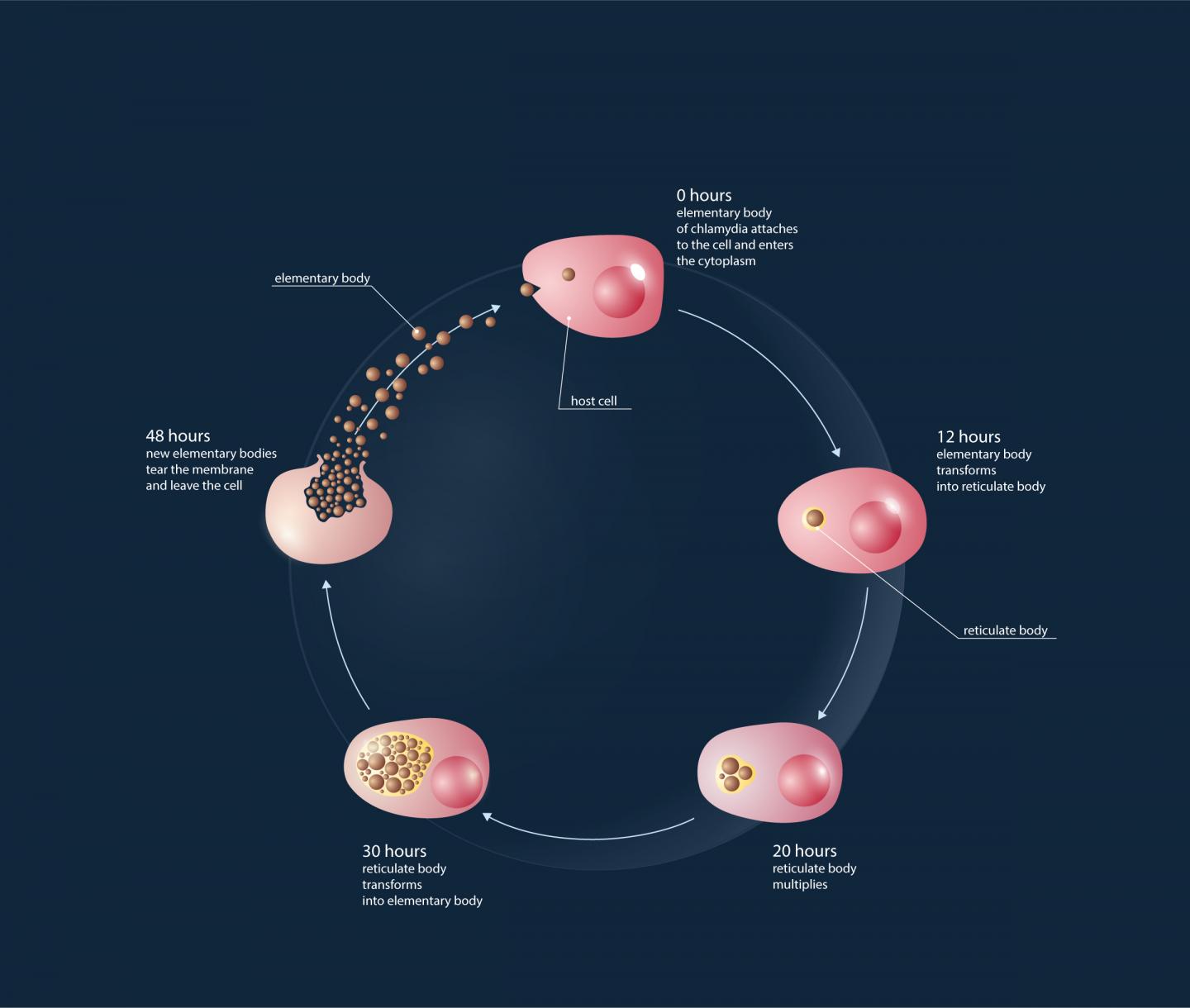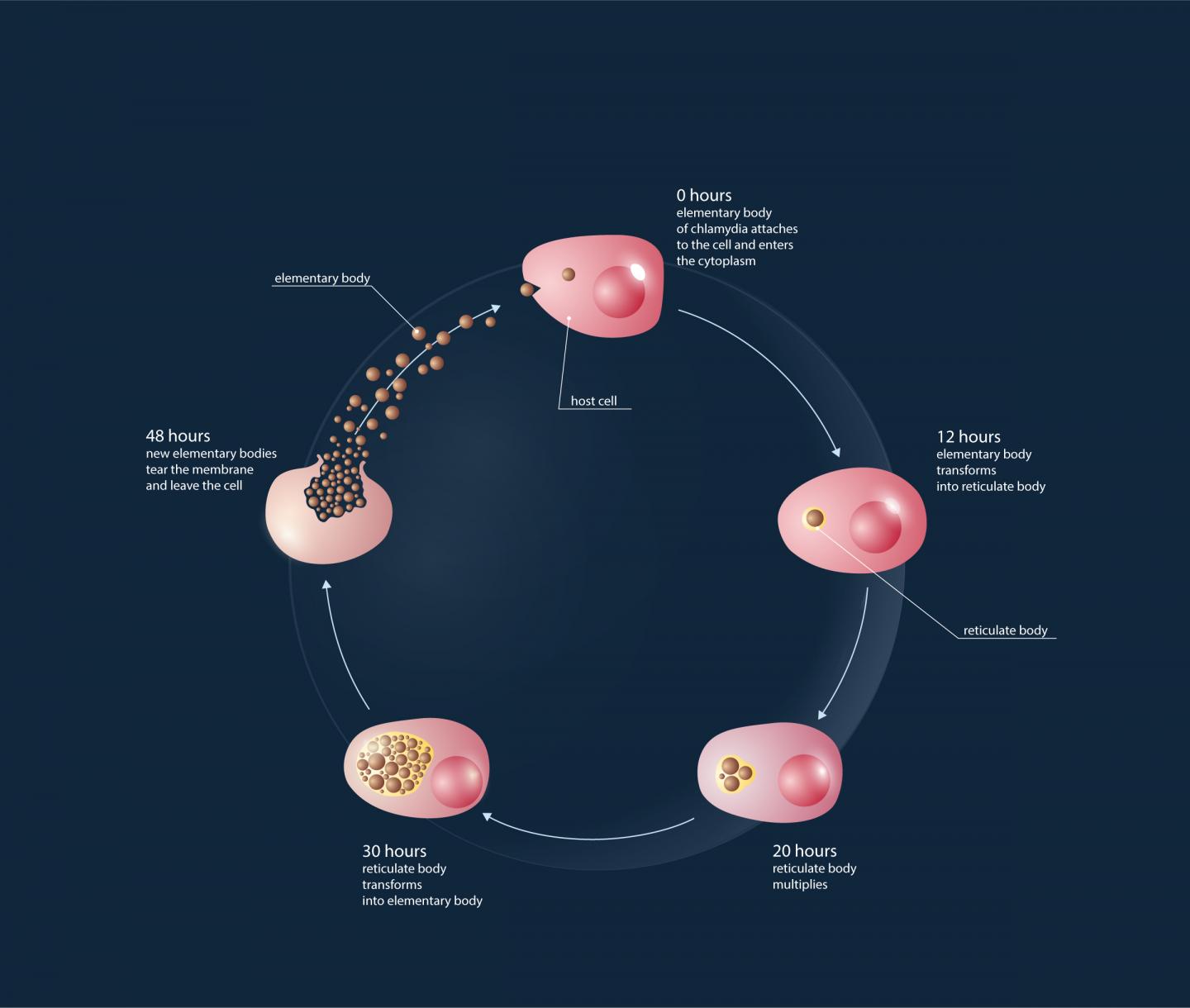
Scientists from Federal Research and Clinical Centre of Physical-Chemical Medicine, Koltzov Institute of Developmental Biology and MIPT have shown that peptidoglycan recognition proteins (PGLYRPs) of the human immune system can play a key role in the fight against chlamydia infections. Their study was published in Infection and Immunity.
Chlamydias are parasite bacteria and cause an infection that affects more than 90 million people a year. Chlamydia is one of the most common sexually transmitted diseases; it can also be spread via objects and the bacteria can sometimes survive on a surface for more than a day.
Chlamydias can be found in two different forms: elementary bodies (EBs) and reticulate bodies (RBs). EBs have strong protection against the environment and other microorganisms, which helps them survive in an intracellular space and allows them to spread and infect new cells. RBs have no constant shape and size — they exist inside the host cell membrane. This form of chlamydia can reproduce and has an active metabolism. This complex life cycle, in which the bacteria constantly change from one form to another, means that chlamydias are able to avoid the effect of most antibacterial proteins.
Proteins that are able to recognize peptidoglycan – a membrane component of some bacteria – are a part of the human immune system. They selectively interact with certain molecules and therefore play an important role in the fight against infections. In a previous study it was shown that these proteins are able to attach to a peptidoglycan and lipopolysaccharides in the cell membrane of bacteria, causing their stress response system to fail. This disruption to the regulation of the intracellular metabolism ultimately causes the death of the cell. PGLYRPs are known to use this process to destroy Escherichia coli and Bacillus subtilis bacteria whose stress response system is quite similar to the system of the chlamydia species Chlamydia trachomatis.
Based on these facts, the researchers made an assumption that PGLYRPs would be able to inhibit a chlamydia infection. To prove this, they added PGLYRP solutions to human cell cultures and then infected the cells with Chlamydia trachomatis. 48 hours later they counted the number of inclusions and compared it with control samples. Their theory about PGLYRPs inhibiting a chlamydia infection was confirmed. The number of chlamydial inclusions in the samples with proteins was ten times smaller than in the control sample. However, a significant antichlamydial effect was only observed with protein concentrations 20 times higher than for E. coli and B. subtilis. According to the authors of the study, this can be explained by the life cycle of chlamydias.
The researchers then checked the hypothesis that the cells die due to the failure of their stress response system. They observed the expression level (expression is the synthesis of substances responsible for the transmission of hereditary information through RNA) of the stress response system genes and how the level changes over time. In the control sample it remained at a base level, but in the cultures with PGLYRPs two peaks were easily distinguished — 1 hour and 72 hours after the infection. At these times, the chlamydias were in the form of elementary bodies and scientists predicted that they would be more vulnerable to PGLYRPs at this particular stage of their life cycle. Their assumption was therefore proved experimentally.
This research proved theories about the structure and life cycle of chlamydias. The researchers worked out a method of obtaining PGLYRPs with the help of genetic engineering and also demonstrated their effect on C. trachomatis bacteria.
"The findings of this research can subsequently be used to determine the exact mechanism of action of peptidoglycan-recognition proteins on chlamydias. A more complete understanding of potential targets for natural and synthetic agents could help scientists to develop efficient antichlamydial drugs", says Pavel Bobrovsky, one of the authors of the study.
###
Media Contact
Sergey Divakov
[email protected]
@phystech
https://mipt.ru/english/





